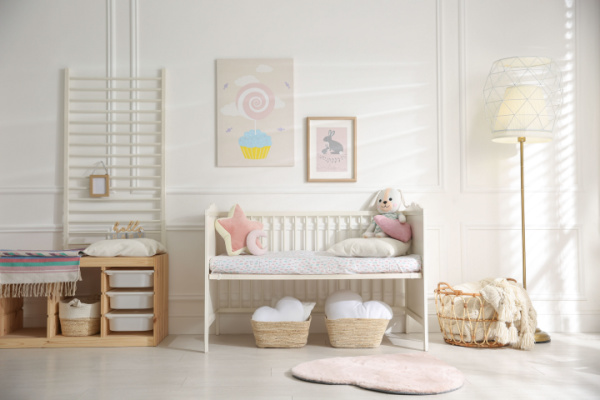Bringing home a new baby is a joyful and exhilarating time. New parents are focused on taking care of their precious bundle of joy, while family and friends are eager to welcome the new life into their world. Preparing for a baby takes some thought and planning but is well worth the time and effort when everyone settles in happily. Here are some ways to get your home ready:

Nursery
Preparing the nursery is one of the most exciting tasks related to bringing a baby home. While you’re picking out the perfect paint colors, remember to make sure the nursery and every room in your home is free of lead paint. If your home was built before 1978, lead-based paint could have been used, which can pose hazards for children. Even if the walls and woodwork were painted over with new layers of lead-free paint, chips and cracks could reveal the harmful substances and be ingested by babies and toddlers. Call in a lead-based paint removal specialist if you think the potential hazard could be present in your home or if you have questions.
Changing Station (Or Two)
You’ll need a safe and convenient place to change your baby’s diapers. If your home has more than one level, or if the living space is a long way from the nursery and primary changing station, it may be a good idea to set up two stations. You’ll need a padded area that’s easy to sanitize and keeps baby from rolling off during changes. Keep a good supply of diapers, wipes, rash treatments, and hand sanitizer on hand. Soft light can also help with nighttime changes.
RELATED: How To Create An Outdoor Play Area
First Aid Kit/Medical Supplies
Talk to your pediatrician about what kind of pain reliever/fever reducer and other medications and supplies are recommended to keep on hand for your baby. Basics often include a digital thermometer, bulb syringe, medicine syringe or dropper, gas drops, antibiotic cream, and any other items your medical professional suggests. Keep the supplies together in a place where you can quickly access them, which is secure and out-of-reach for small children.
Safety
Although it may be several months before your baby is mobile, now is the time to think about child proofing your home. Line up a professional child safety service or do-it-yourself with cabinet locks, outlet covers, hot water faucet covers, and lowered water heater temperature. Secure medicines, cleaning chemicals, other potential household poisons, and electrical and window treatment cords that could pose choking hazards. Every home has different potential dangers, so be diligent and observant about what could be a risk in yours.
RELATED: How To Make Your Yard Kid-Friendly
Stock Up
It’s not easy to run out to the store in the middle of the night with a newborn, so make sure to always have ample supplies of baby basics on hand. In fact, it’s a good idea to store “spares” of necessities like diapers, formula, wipes, bottles, and pain reliever/fever reducer medications, so you always have a backup if needed. Keep your spare supplies in the same cabinet or closet so you can see “at a glance” what you need to replenish.
Get Coverage
The last thing you need when you bring a new baby home is the hassle and potential expense of a major home system or appliance malfunction. An HSA home warranty is a one-year contract that covers the repair or replacement of many major home system and appliance components, protecting your home, budget, and peace of mind. For more information, visit onlinehsa.com today.
See the plan contract at onlinehsa.com for coverage details, including service fees, limitations and exclusions. Charges for non-covered items may apply.